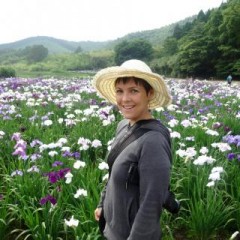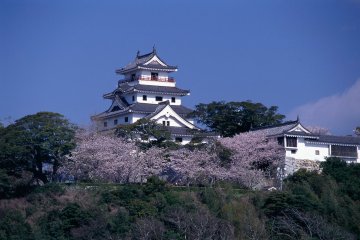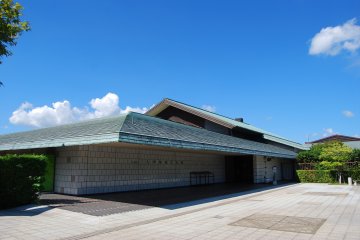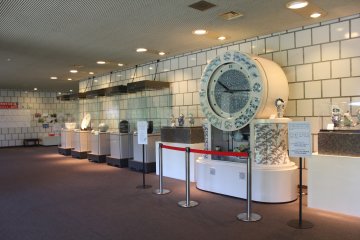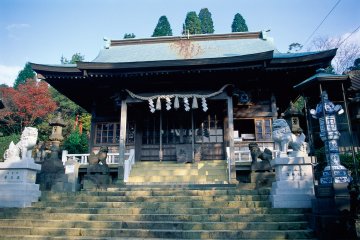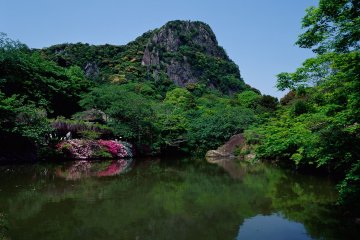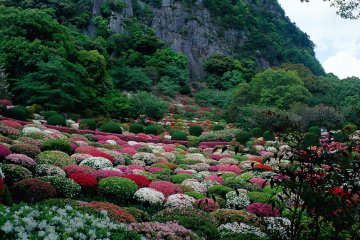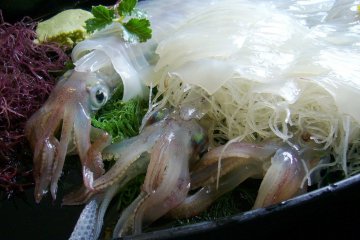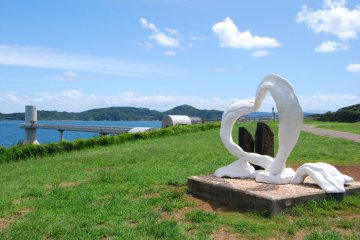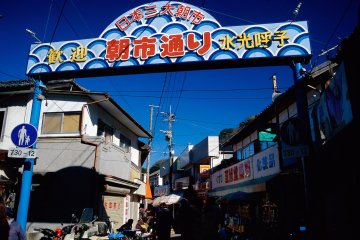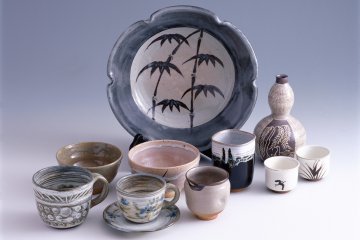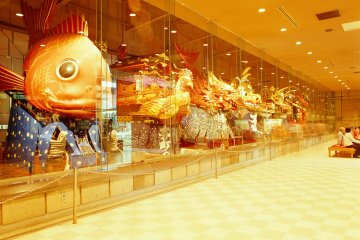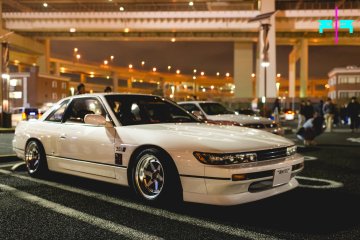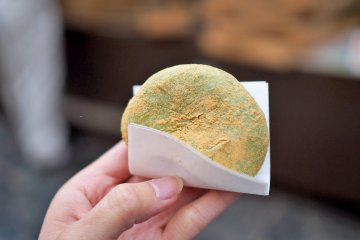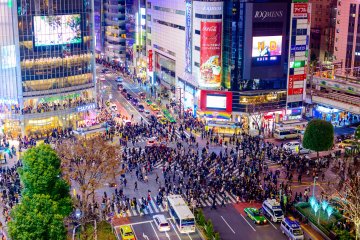Saga may be one of Japan's smaller prefectures, but there is no shortage of things to do in this southern prefecture on the island of Kyushu. Tucked between the financial powerhouse of Fukuoka and the historical region of Nagasaki, Saga charms visitors with fresh seafood, centuries of porcelain production and plenty of small town charm.
One-Day Itinerary
Even though it's small, you still can't see all of Saga in a day! This one-day itinerary focuses on Saga's rich porcelain history with visits to the pottery town of Arita, and then the onsen district at Takeo Onsen.
- Saga Prefectural Kyushu Ceramic Museum
- Touzan Shrine
- Mifuneyama Rakuen Garden
- Takeo Onsen Roumon and baths
Saga Prefectural Kyushu Ceramic Museum

Arita is only a 40-minute train ride on the Limited Express Midori from Saga station. Begin your day with a visit to the Saga Prefectural Kyushu Ceramic Museum for an overview of the region's porcelain history and production. Don't miss the music box clock made out of Arita ware in the main hall - it chimes twice an hour.
Touzan Shrine

From the museum, take the bus or a taxi to the Arita-Uchiyama area, where the streets contain a mix of carefully-preserved buildings from the Edo and Showa periods. Many of the area's major potters have their showrooms here and visitors can pay homage to the original Korean potters who discovered the clay that made Arita famous at the Touzan Shrine. Even the shrine's torii gate is made out of porcelain!
Mifuneyama Rakuen Garden

Take the JR Bus bound for Ureshino Onsen from Takeo Onsen station (about 10 minutes) to reach this scenic spot. Dating back to 1845, its location at the western foot of Mt Mifune offers a multitude of beautiful views and tranquil moments.
Takeo Onsen Roumon and baths and baths

Designed by Karatsu’s Tatsuno Kingo (famous for being the architect behind Tokyo Station), this red tower gate, the sakuramon, is a much-loved symbol of Takeo Onsen. After exploring the area, why not relax and soak in the soothing waters at one of the numerous public baths here, including Motoyu, Horaiyu and Saginoyu.
Trains back to Saga Station are only around 30 minutes.
Two-Day Itinerary
Begin your two day exploration of Saga Prefecture at Fukuoka Airport, the gateway to Kyushu and a hub for travelers in the region. From Fukuoka Airport, take the JR Kuko/Chikuhi line to Nijinomatsubara Station.
- Niji-no-Matsubara Pine Forest
- Karatsu/Yobuko coastal town (lunch)
- Genkai Undersea Observatory Tower
- Cape Hado
- Yobuko Morning Market
- Karatsu City Furusato Kaikan Alpino
- Karatsu Kunchi Harvest Festival - Hikiyama Exhibition Hall
- Karatsu Castle
Day 1
Niji-no-Matsubara Pine Forest
There's no better way to start a morning than with a walk through the four kilometer long Niji-no-Matsubara Pine Forest, with trees that date back around 350 years. Many legends are associated with this atmospheric spot.
Karatsu/Yobuko coastal town (lunch)

Next take the JR Karatsu line to Karatsu Station,just next to the Karatsu bus center. Board a Showa Bus bound for Yobuko and get off at the main Yobuko bus stop. This coastal town is best known for its locally-caught squid, served so fresh as sashimi in the local fish market that the creature's tentacles are still wiggling!
Genkai Undersea Observatory Tower

After lunch, take the Showa bus further up the coast to the Hadomisaki National Hostel bus stop. This windswept cape is home to the Genkai Undersea Observatory Tower, whose tower sitting in the sea itself allows visitors a close-up look at the marine life off-shore. The area is a beautiful place for a hike in good weather.
Cape Hado

The Cape Hado area around the Genaki Submarine Observatory is worth exploring for its stunning scenery and sea views. Enjoy a walk along the coastal path or, in warmer months, try a dip in the sea.
Take the Showa Bus back to Yobuko to spend the evening in a traditional Japanese ryokan.
Day 2
Yobuko Morning Market

Start your morning with a wander through the Yobuko Morning Market, where you can see the latest catch that has just been brought in. The market has been in business for over a century and sells vegetables, dried seafood and other local products as well.
Karatsu City Furusato Kaikan Alpino

By late morning, take the Showa bus back to Karatsu. The city has a wealth of sightseeing options, so begin with a visit to the Karatsu City Furusato Kaikan Alpino, just next to the station. Like the towns of Arita and Imari, Karatsu is known for its pottery production and this gallery showcases numerous examples of local work. Visitors also have the chance to try their own hand at painting Karatsu ware.
Karatsu Kunchi Harvest Festival - Hikiyama Exhibition Hall

Karatsu is home to one of Kyushu’s most vibrant festivals, the 3-day Karatsu Kunchi which takes place annually on November 2-4. This harvest celebration sees 14 lacquered floats being pulled through the streets and along the beach just outside town. The rest of the year, the floats can be seen at the Hikiyama Exhibition Hall in the center of town. The neighboring shrine is where the festival starts and ends.
Karatsu Castle

Finish your Saga adventure with a visit to Karatsu Castle. Though not the original, the views from the top of the main keep over the surrounding landscape – including the pine forest where this itinerary began – more than justify the price of admission.


